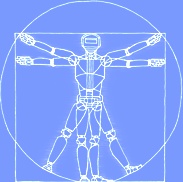
Computational Cameras: Redefining the Image
Shree K. Nayar, Columbia UniversityIn this talk, we will first present the concept of a computational camera. It is a device that embodies the convergence of the camera and the computer. It uses new optics to select rays from the scene in unusual ways, and an appropriate algorithm to process the selected rays. This ability to manipulate images before they are recorded and process the recorded images before they are presented is a powerful one. It enables us to experience our visual world in rich and compelling ways. We will show computational cameras that can capture wide angle, high dynamic range, multispectral, and depth images. Finally, we will explore the use of a programmable light source as a more sophisticated camera flash. We will show how the use of such a flash enables a camera to produce images that reveal the complex interactions of light within objects as well as between them.
Biography
Shree K. Nayar received his PhD degree in Electrical and Computer Engineering from the Robotics Institute at Carnegie Mellon University in 1990. He is currently the T. C. Chang Professor of Computer Science at Columbia University. He co-directs the Columbia Vision and Graphics Center. He also heads the Columbia Computer Vision Laboratory (CAVE), which is dedicated to the development of advanced computer vision systems. His research is focused on three areas; the creation of novel cameras, the design of physics based models for vision, and the development of algorithms for scene understanding. His work is motivated by applications in the fields of digital imaging, computer graphics, and robotics.
He has received best paper awards at ICCV 1990, ICPR 1994, CVPR 1994, ICCV 1995, CVPR 2000 and CVPR 2004. He is the recipient of the David Marr Prize (1990 and 1995), the David and Lucile Packard Fellowship (1992), the National Young Investigator Award (1993), the NTT Distinguished Scientific Achievement Award (1994), the Keck Foundation Award for Excellence in Teaching (1995) and the Columbia Great Teacher Award (2006). He has published over 100 scientific papers and has been awarded several patents for inventions related to vision and robotics.
See also http://www1.cs.columbia.edu/~nayar/
